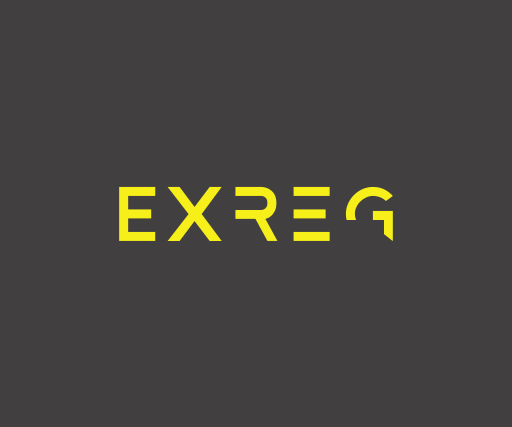What is ATEX?
A Complete Guide…
TL;DR
ATEX (“Atmosphères Explosibles”) is the European Union’s twin-directive system that governs (a) how workplaces control explosive atmospheres and (b) how manufacturers design equipment for them.
If you need to mark, inspect, or certify electrical or mechanical equipment in Zones 0-2 or 20-22, you’re working under ATEX—full stop.
1. ATEX in 60 seconds
Two directives
- 2014/34/EU – “ATEX Product” – obligations on manufacturers of equipment and protective systems. Source
- 1999/92/EC – “ATEX Workplace” – duties for the employer: zoning, risk assessment, Ex register, training, inspections. Source
| Directive | Scope | Primary Duty Holder |
|---|---|---|
| 2014/34/EU (ATEX 114) | Design, manufacture and sale of equipment / protective systems | Manufacturers & importers |
| 1999/92/EC (ATEX 153) | Workplace risk assessment, zoning and maintenance | Employers & site operators |
- Scope – Gas, vapour, mist or dust that can form an explosive mix with air under normal atmospheric conditions.
- Goal – Zero ignition sources → protect life, plant, environment.
2. Product Directive 2014/34/EU – What manufacturers must do
2.1 Equipment Groups & Categories
| Group | Atmosphere | Typical Zone | Category |
|---|---|---|---|
| I | Underground mines (methane & dust) | N/A | M1 / M2 |
| II | Surface industries (refineries, grain silos) | 0 / 1 / 2 or 20 / 21 / 22 | 1G / 2G / 3G 1D / 2D / 3D |
2.2 Essential Health & Safety Requirements (EHSRs)
Meet Annex II of 2014/34/EU via harmonised standards (e.g. IEC 60079-0).
Notified-body assessment for Categories 1 & 2.
Add full ATEX marking on rating plate:II 2G Ex db IIC T4 Gb
3. Workplace Directive 1999/92/EC – What operators must do
Classify zones using EN IEC 60079-10-1/-2.
Create an Explosion Protection Document (EPD).
Maintain an Ex Equipment Register with initial, periodic & sample inspections per EN IEC 60079-17.
Train personnel in explosion basics and permit-to-work.
Update zoning & risk whenever the process changes.
4. Hazardous-Area Zone System
| Gas / Vapour Zones | Dust Zones | Presence of Explosive Atmosphere |
|---|---|---|
| Zone 0 | Zone 20 | Continuous / > 1 000 h yr |
| Zone 1 | Zone 21 | Likely in normal operation (10-1 000 h yr) |
| Zone 2 | Zone 22 | Unlikely / short duration (< 10 h yr) |
Designers match Category 1 equipment to Zone 0/20, Category 2 to Zone 1/21, etc.
5. ATEX vs IECEx – Same philosophy, different passports
| Aspect | ATEX | IECEx |
|---|---|---|
| Legal status | EU law (mandatory) | Voluntary global certification |
| Marking | CE + Ex symbol | IECEx Certificate No. |
| Acceptance | EU/EEA, UK (UKCA) | 40 + member states |
| Testing body | EU Notified Body | IECEx Certification Body |
| Document language | Official EU language(s) | English |
For global projects the usual path is IECEx first → ATEX via fast-track because test reports are mutually accepted.
6. Common Misconceptions
“ATEX only covers electrical gear.” – 2014/34/EU also applies to mechanical sources of ignition.
“Zone 2 needs no inspections.” – EN IEC 60079-17 requires sample inspections even in Zone 2/22.
“UK left ATEX.” – UK adopted UKEX / UKCA; technical content mirrors ATEX.
7. Practical Compliance Workflow (Surface Industries)
Hazard study → assign zones.
Specify equipment: choose correct Group, Category, Gas/Dust subgroup, T-class.
Collect certificates & declaration of conformity; file number in the EX register.
Install & initial inspect (detailed, EN 60079-17).
Periodic inspections (visual/close/detailed per risk).
Change management: any modification → re-assess zones & docs.
8. Resources & Backlinks
EU Commission ATEX portal – harmonised standards & FAQs
EUR-Lex full text 2014/34/EU • 1999/92/EC
EXREG Software Tour – digitise EN 60079-17 inspections
9. Conclusion
ATEX is more than a CE logo—it’s a life-cycle discipline that starts with zoning studies and never ends while the plant is live. Whether you’re specifying flame-proof motors or fighting paper registers, mastering ATEX cuts risk and calms audit day.
Next step → See how EXREG automates inspection scheduling, Ex-register management, and ATEX / IECEx reporting. Start your free 7-day trial.
